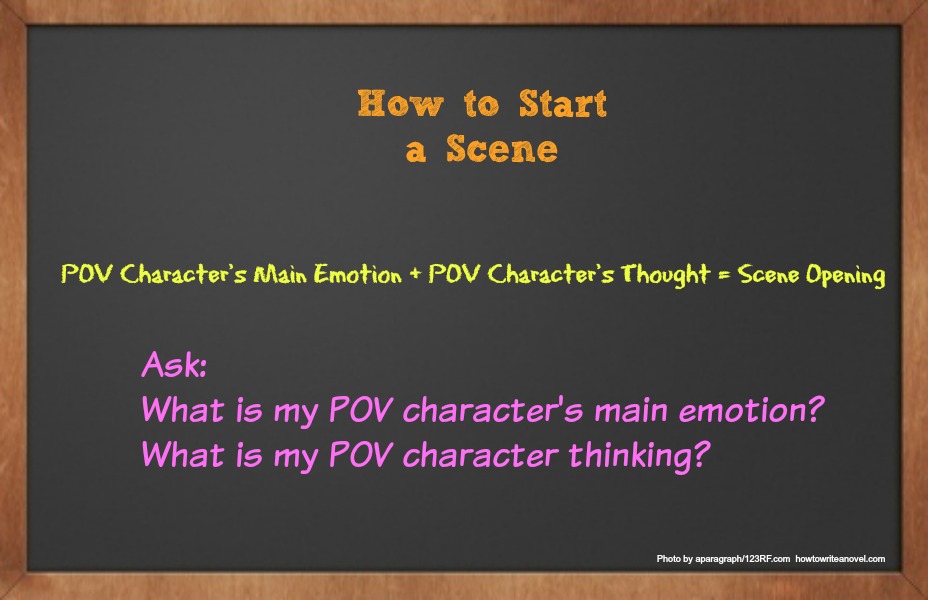When you unpack a novel, it is nothing more – and nothing less – than a series of scenes strung together. String the scenes together in the proper order – action, reaction and repeat for 90 thousand words or so – and you have a well-paced novel.
But it all begins with a scene.
Which begs the question: How do you begin a scene?
A few weeks ago, a writing friend and I were discussing a scene she was writing. We’d tossed it back and forth for several days, always coming back to the same question: How could she write it stronger?
There are a number of things I like to do when I’m prepping to write a scene, a variety of techniques that I pull out of my virtual writer’s toolbox to help me build a scene that will pull my reader into my story. Techniques like FOCUS and SHARP, both tools I’ve blogged about before.
But as I talked with my friend, I throttled back on my advice and emailed her a basic writer’s equation to help her clear away the clutter in her scene:
POV Character’s Main Emotion + POV Character’s Thought = Scene Opening
POV Character’s Main Emotion:
It’s vital to know the main emotion of your scene. If you don’t laser in on one key emotion, then your Point of View (POV) character will wander around from discouragement to anger to sadness. If your POV character is emotionally wandering then guess who else gets lost? Your readers. Oftentimes when I judge contest entries, I’ve seen writers overload a scene with too many emotions rather than choosing one main emotion for their POV character. Select one main emotion and then weave that emotion through the scene using dialogue and action and Storyworld.
POV Character’s Thought:
You figured out what your POV character is feeling, now ask yourself: When this scene opens, what is my POV character thinking? To do this, I sit back and imagine the situation my POV character is in and try to think like that character. Sometimes I go with the first thought that pops into my head. Sometimes I mull for a while before I settle on a sentence or two that accurately represents my POV character’s thoughts.
Here are a few examples of how I’ve opened my novels based on my POV character’s emotions and thoughts:
- She never should have said yes. (THOUGHT) Allison smoothed the bodice of the wedding dress, the fitted lace sleeves clinging to her arms. Waves of material billowed out from her waist, threatening to overwhelm her like a silken tsunami. Wish You Were Here (Emotion: Regret)
- What exactly was she celebrating? (THOUGHT) The question haunted Kendall all day long. It was her birthday—she ought to be able to answer it. Catch a Falling Star (Emotion: Disappointment)
- Six minutes. Surely six minutes was enough time to propose, wasn’t it? (THOUGHT) Returning to where Elissa and he first met seemed so romantic–but Stephen hadn’t factored in Breckenridge’s high-speed ski lifts. Somebody Like You (Emotion: Anxiety)
Of course there are more elements that go into constructing a compelling scene, but remembering this simple equation is a good starting point for any writer:
POV Character’s Main Emotion + POV Character’s Thought = Scene Opening
Figure out what your POV character is feeling and what they are thinking. Write a sentence or two based on those two factors and then go on from there.
What would the scene starter equation look like for the scene you’re writing?
